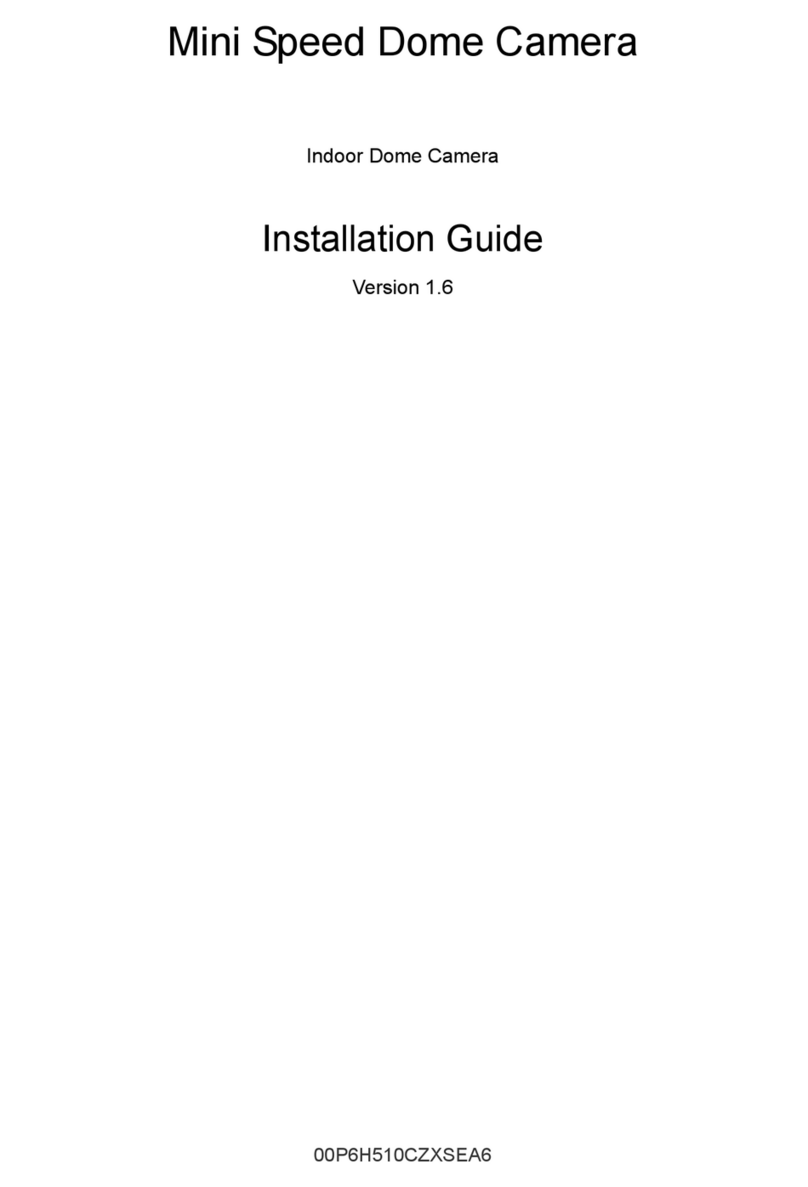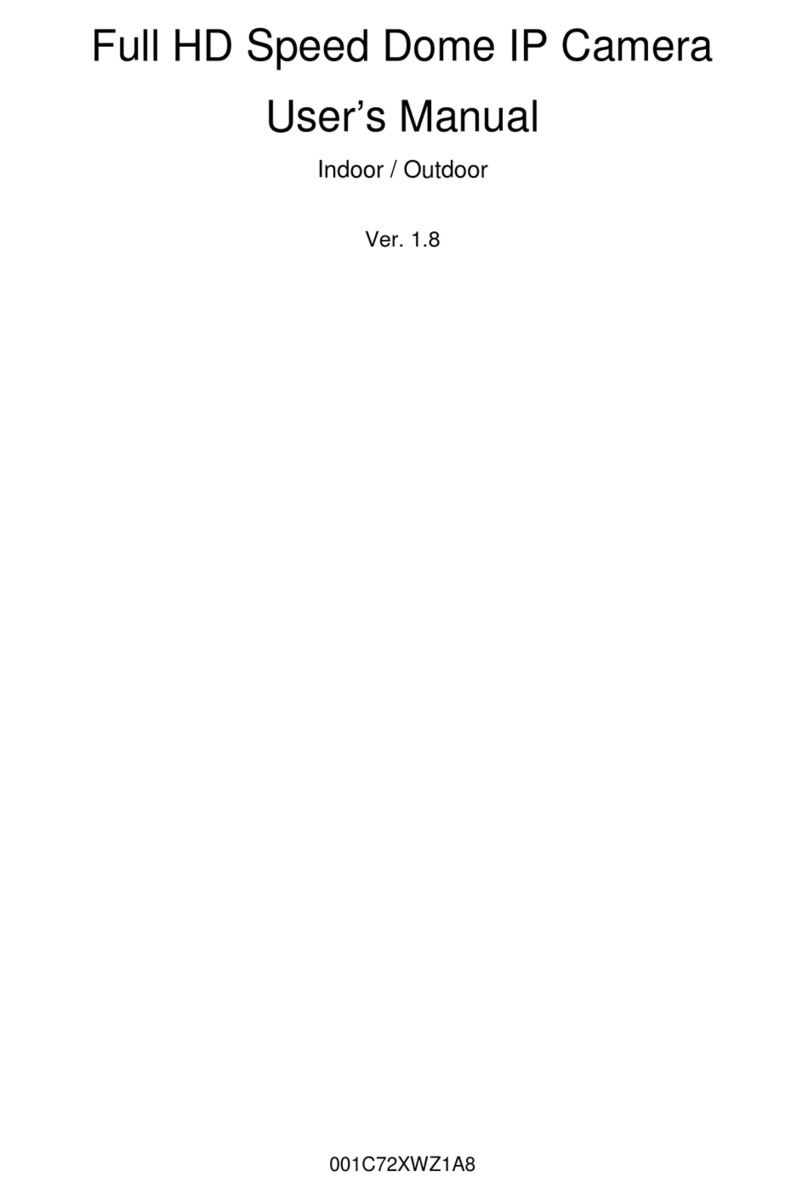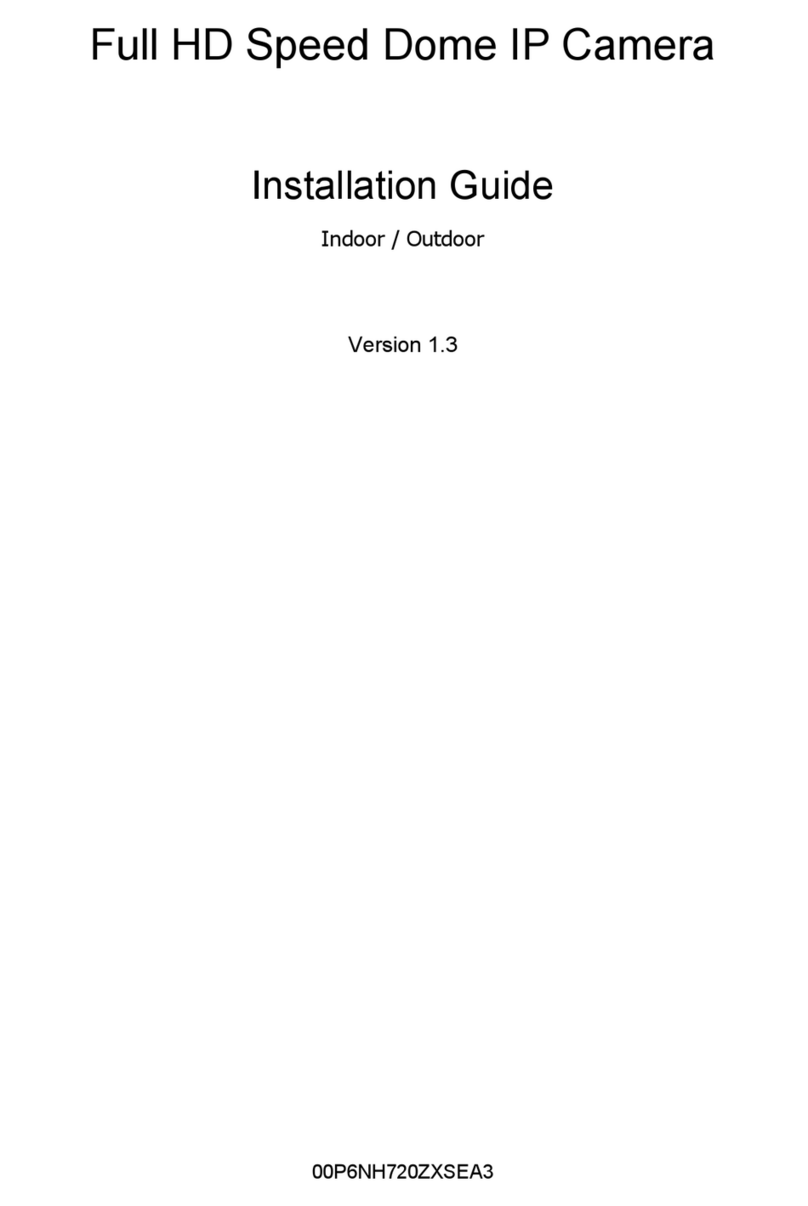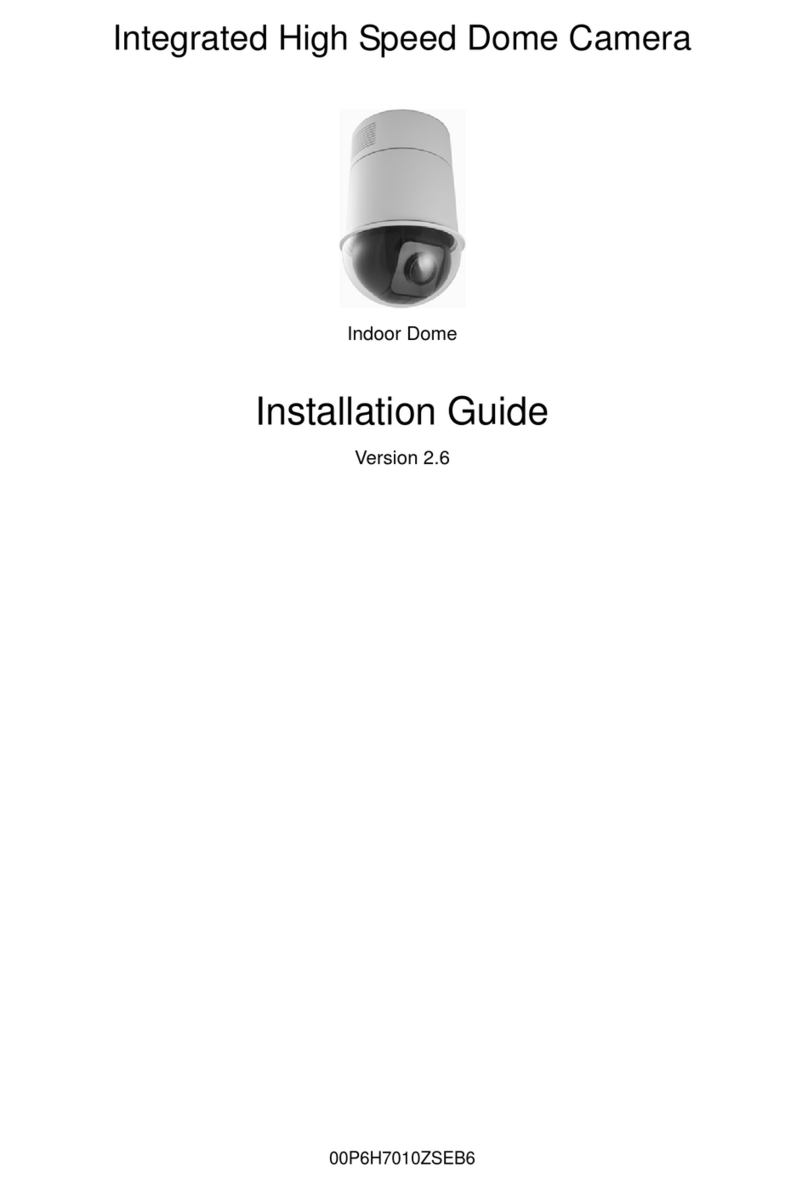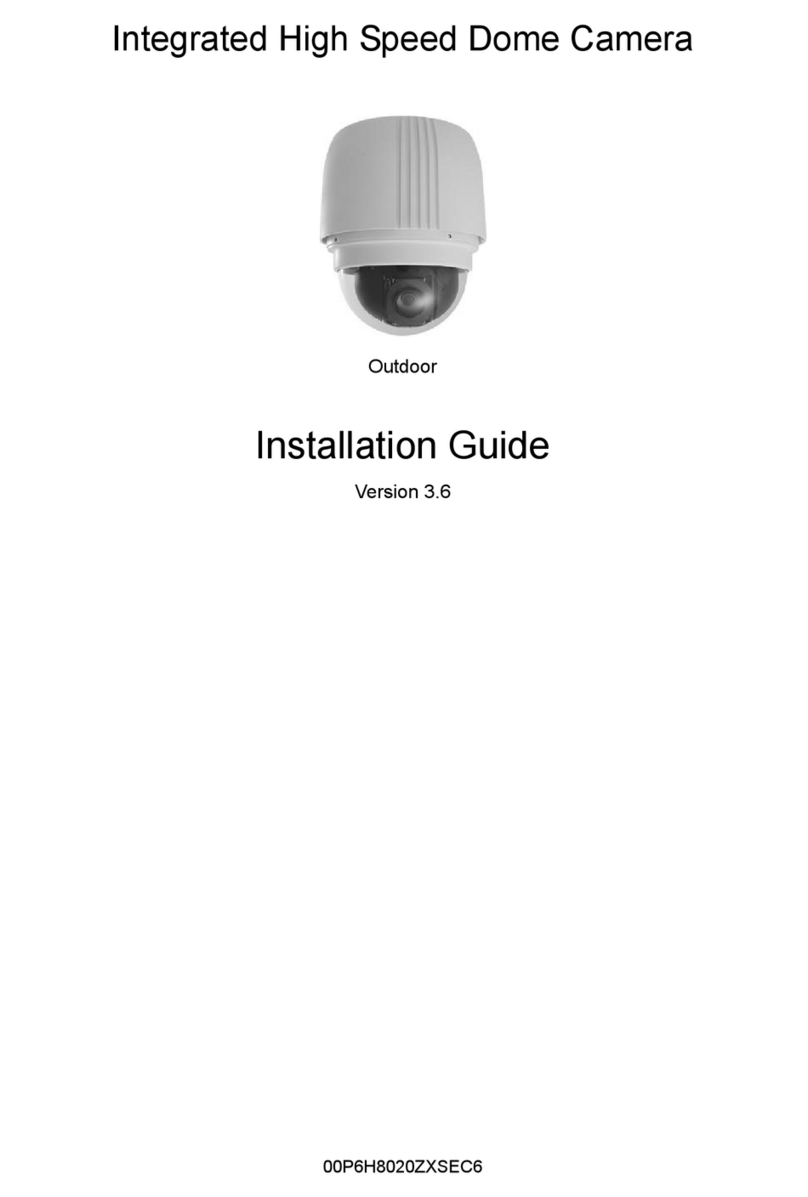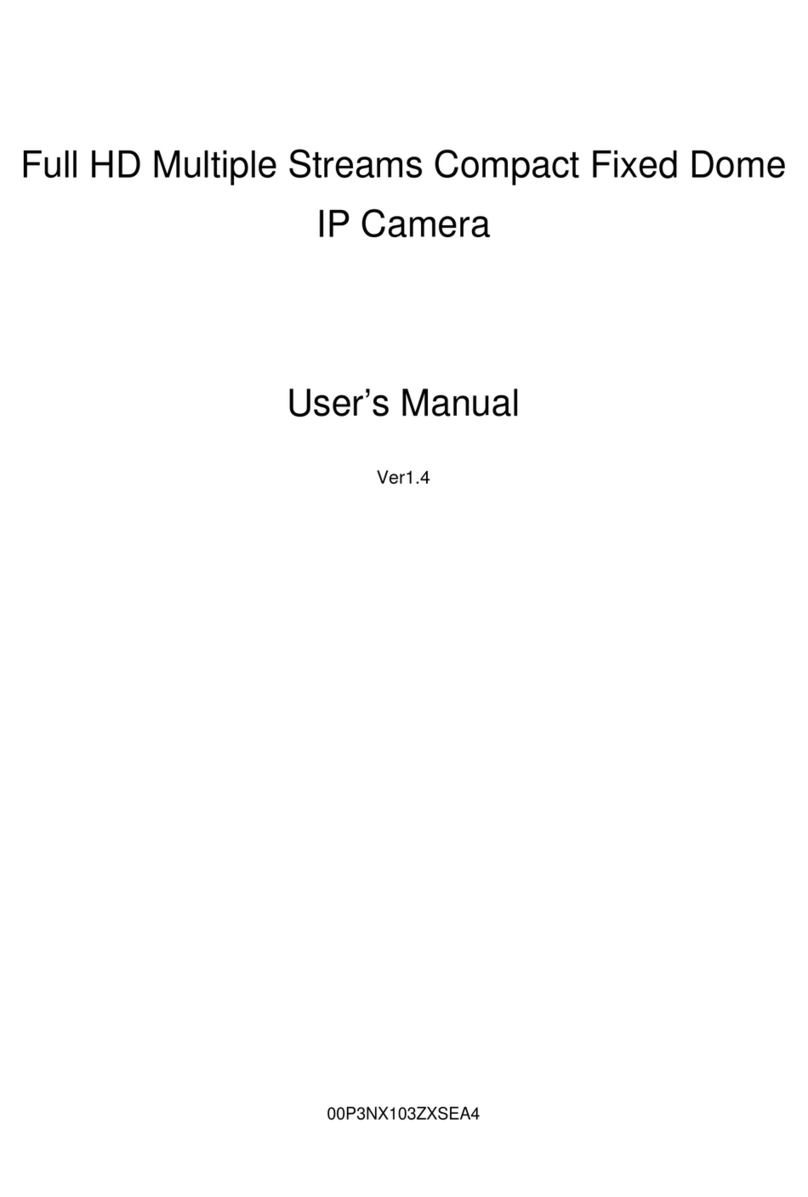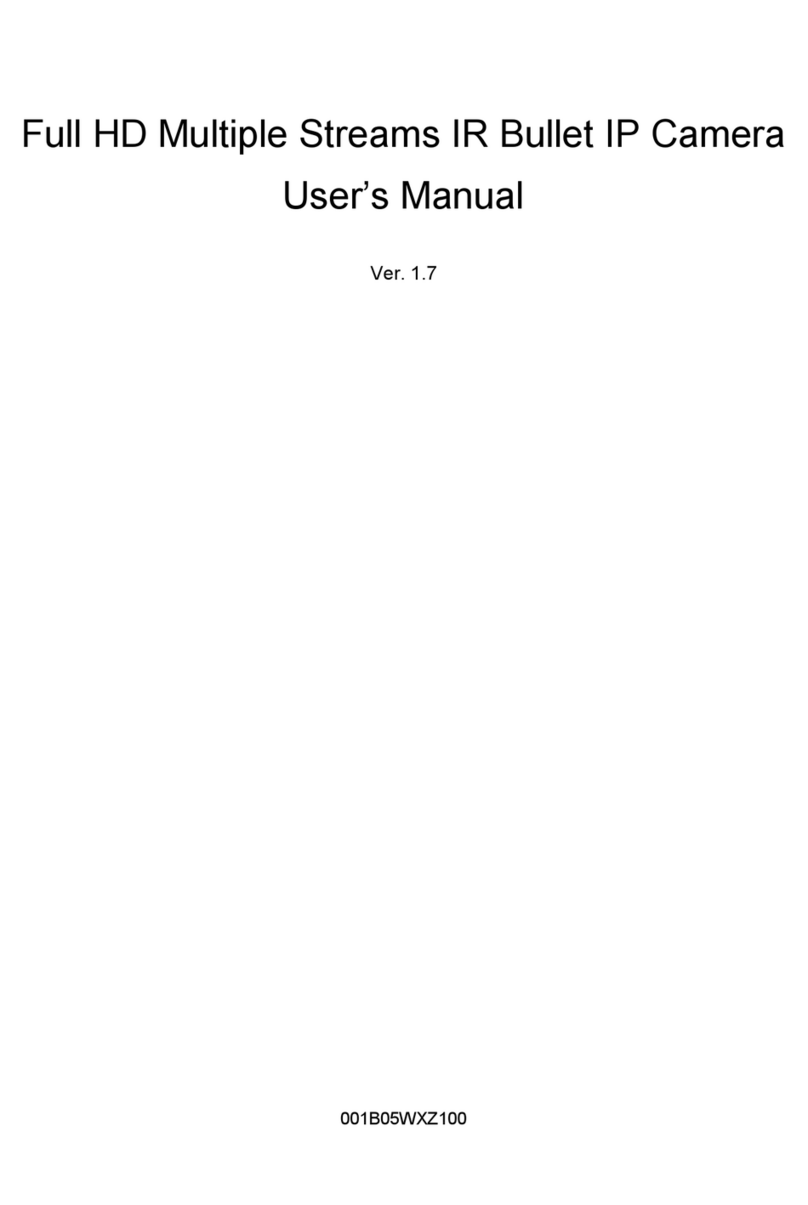Installation Guide
5
Table of Contents
1. Introduction............................................................................................................................ 7
2. Standard Package Content.................................................................................................... 8
3. Dome Setups and Cable Connection ................................................................................. 10
3.1 Dome Camera Setups................................................................................................ 10
3.1.1 Switch/Connector Definition......................................................................... 10
3.1.2 Communication Switch Setting.................................................................... 12
3.1.2.1 Analog Dome Camera................................................................ 12
3.1.2.2 IP Dome Camera ....................................................................... 13
3.1.3 ID Setting..................................................................................................... 13
3.1.3.1 Analog Dome Camera................................................................ 13
3.1.3.2 IP Dome Camera ....................................................................... 14
3.1.4 Camera Control Protocol Setting................................................................. 14
3.1.4.1 Analog Dome Camera................................................................ 14
3.1.4.2 IP Dome Camera ....................................................................... 15
3.2 Cable Definition and Requirements............................................................................ 15
3.2.1 Cable Requirements.................................................................................... 15
3.2.2 22-Pin Data Cable ....................................................................................... 16
3.2.2.1 Analog Dome Camera................................................................ 16
3.2.2.2 IP Dome Camera ....................................................................... 17
3.2.3 22-Pin Connector Definition......................................................................... 17
3.2.3.1 Analog Dome Camera................................................................ 19
3.2.3.2 IP Dome Camera ....................................................................... 19
3.2.4 RS-485 Connector Definition (Analog) ........................................................ 20
3.2.5 Cable Wiring and Connection...................................................................... 20
3.2.6 Ethernet Cable Connection.......................................................................... 21
4. Dome Installation ................................................................................................................. 22
4.1 Dome Dimension........................................................................................................ 22
4.2 Optional Accessories.................................................................................................. 22
4.3 Ceiling Mount ............................................................................................................. 30
4.3.1 Hard Ceiling Mounting ................................................................................. 30
4.3.2 In-ceiling Mounting....................................................................................... 33
4.3.3 In-ceiling Mounting with Ceiling Panel......................................................... 36
4.3.4 Ceiling Mounting with Straight Tube ............................................................ 37
4.4 Wall Mount ................................................................................................................. 40
4.4.1 Compact Pendent Mount ............................................................................. 40
4.4.2 Standard Pendent Mount ............................................................................. 42
4.4.3 Wall Box Mounting....................................................................................... 44
4.5 Corner Mount ............................................................................................................. 46
